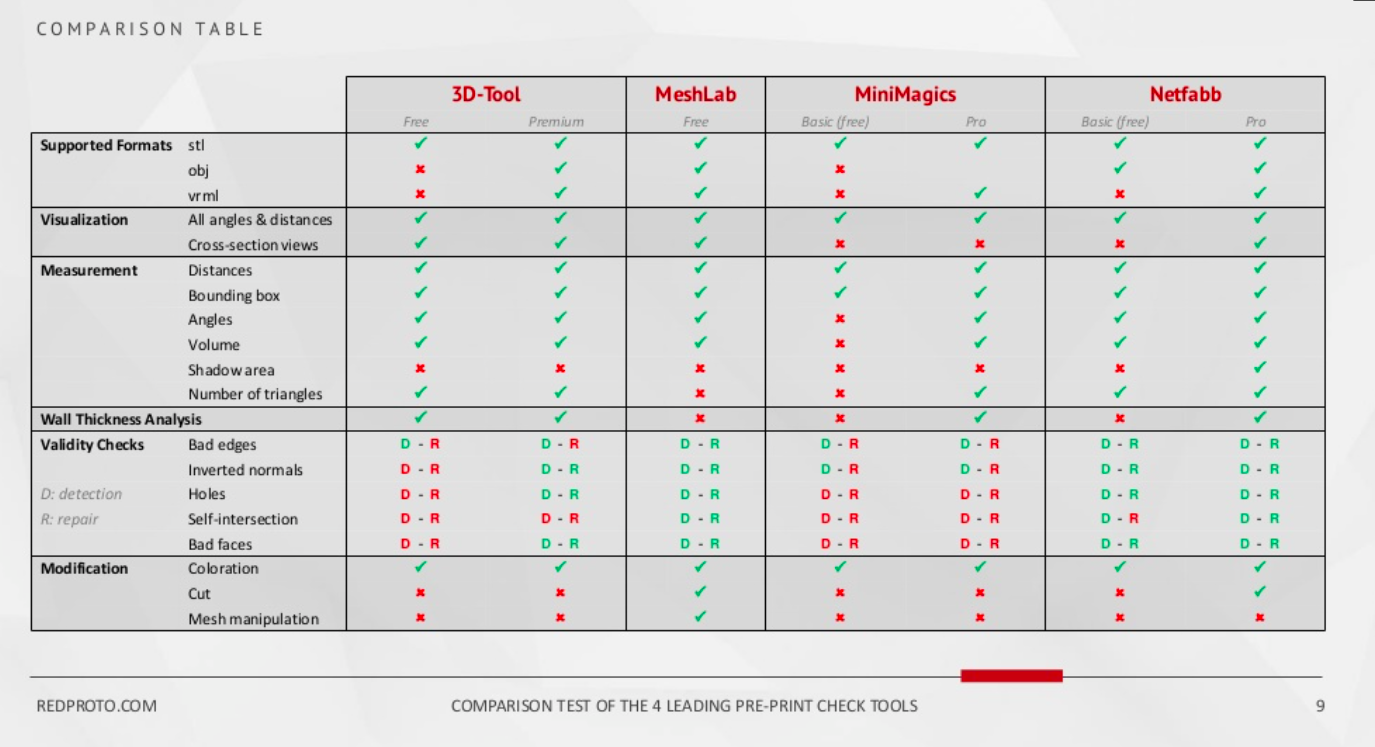What 3D printing has done is speed up, exponentially, the passage from digital 3D model to solid object. What it cannot do is speed up the passage from conceptual idea to digital CAD model. That is still, entirely, up to the ability of the designer. So RedProto, a 3D modelling network, decided to accelerate the process by working on the designers’ skills.
The first step undertaken by Loïc Ledoux, RedProto’s founder, was to address the one thing that can be done almost automatically through the use of dedicated software: file fixing. He thus compiled and published on SlideShare a white paper comparing the 4 leading Pre-Print Check Tools in the community: Meshlab, 3D Tool, NetFabb and MiniMagics.
The idea is to help RedProto’s close to 50 registered designers to familiarize themselves with the requirements a file needs to have to be 3D printed and with the strengths and weaknesses of each checking software.
“As RedProto we work together with designers to make sure they are using the right tools so as to deliver 3D models that can be perfectly 3D printed out through services such as Sculpteo or Shapeways”, says Ledoux. “Capable and affordable 3D designers that are sufficiently familiar with 3D printing are still hard to come by. We are helping the designers in our community deliver the best and most complete 3D models possible.”
RedProto’s white paper begins by detailing six parameters that will cause a file to be unprintable (things such as self intersections, wall thickness or inverted normals) and then analyzes the four checking tools. Meshlab is considered the most complete among the four though its user interface can be significantly improved. MiniMagics and 3D Tool are considered the easiest to use while NetFabb is the one that comes out as the most appealing for its ability to combine features and an accessible interface.
Ledoux knows the process of “growing 3D modellers” will be a lengthy one, though the growth in his platform’s adoption has been significant and the designers familiarization with 3D printing technologies is also rapidly increasing. “What is really interesting is the “wow” effect on people when they see their basic 2D sketch turned into a 3D model. That is the kind of magic they are looking for and making sure their file is ready to be 3D printed is a must.”



